© Marion Mugs McConnell
The Pacific Crest Trail is the highest, most scenic trail from Mexico to Canada. The Continental Divide Trail divides the continent with its mountain ranges, so rivers that flow from it to the west go into the Pacific Ocean, and rivers that flow from it to the east go into the Atlantic Ocean. This tells us that it is also embracing of high altitude.
I haven’t done the Appalachian Trail, but reading about it tells me there are also some very challenging climbs. These National Scenic Trails traverse through all terrains, from desert to mountain passes, from sea level to over 14,000 feet.
I found that the regular practice of pranayama and meditation made a big difference in my comfort level, physically, emotionally, and mentally.
PRANAYAMA WHEN ON THE HIKING TRAIL
Prana is the life force energy, and yama is the control of, or managing of this force. It is that which brings all movement to the body, mind, and breath. Without this life force we are only a corpse of molecules put together to make bones, skin, blood, etc. When we consider this, it makes perfect sense to use this life force energy in the best way possible for whatever activities we are doing.
Simply put, inhalation sends the blood to the heart and lungs allowing for the distribution of oxygen throughout the body. This stimulates the sympathetic nervous system, so we are continually renewed and ready for action. Exhalation stimulates the parasympathetic system, allowing us to release toxins with the breath, be more relaxed and able to “let go”.
The yogis established numerous pranayama techniques for various purposes, and for us to benefit from. I found certain techniques to be very beneficial for hiking conditions. I will discuss them here but if you are unfamiliar with any of the techniques, I encourage you to learn them more thoroughly from someone who knows them, before trying them.
Ok, back to the management of the life force. Prana “rides” on the breath, or is the subtle aspect of the breath. So regulating the breath regulates the flow of prana. To regulate the breath, we count for a certain number of seconds on the inhalation and the exhalation. The ratio of count may vary with each pranayama. For example:
- a 1:1 ratio means if I inhale for 6 seconds, then I exhale for the equal time of 6 seconds.
- a 1:2 ratio means if I inhale for 6 seconds, then I exhale for twice as long, or 12 seconds.
- a 1:2:2 ratio means if I inhale for 6 seconds, then I hold the breath in for twice as long, or 12 seconds, and then I exhale for twice as long 12 seconds.
- a 1:1:1:1 ratio means if I inhale for 6 seconds, then I hold the breath in for equal time or 6 seconds, then I exhale for equal time of 6 seconds, and hold the breath out for 6 seconds.
The first number in the ratio establishes what the second and third and fourth number will be. You set the seconds that are comfortable for you.
UJJAYI is one of the most practical pranayamas for life on the trail.
I am going to spend a little time explaining how to use it on the trail. The most common variation of this technique is to breathe through both nostrils, and it can be done while walking. It is extremely helpful for endurance and stamina. In fact, the name ujjayi implies victory! The Sanskrit word jaya means victory, and therefore ujjayi is known as the victorious breath.
Ujjayi also means “with sound”, because when we are victorious, we make joyful sounds! Therefore, we create a soft sound while breathing with a slight closure of the glottis. To put it simply, create a slight constriction in the vocal cords. As an example, when you whisper “haaaaaaaa” you get that closure. Now try to replicate that soft feeling in the throat while inhaling and exhaling “haaaaa” with the mouth closed. If the throat is too tight, it will become a snore. Just keep it soft enough so you can hear your breathing.
Ujjayi pranayama affects the Vishuddhi chakra in the throat area. The throat is the source of our voice. Yogis say a benefit of ujjayi is to sweeten or purify our voice. Our thoughts become our words, so working with this area helps to keep our thoughts and words positive.
When walking I synchronise the ujjayi breathing to my footsteps. Therefore, my count becomes footsteps instead of seconds. I always use an uneven number for the count, such as 3, 5, 7, etc, for the purpose of balance. This prevents the favouring of the same foot for the first step each time you renew the count. If I use an even number like 4, then starting with the right foot I tend to put more force on that foot for the initial step. 1-2-3-4, 1-2-3-4. I know, it is subtle, but real. By using an uneven count the initial step will alternate between feet.
When hiking on fairly even ground I do ujjayi with a ratio of 1:2. For example, inhaling for 3 footsteps and exhaling for 6 footsteps, or inhaling for 5 footsteps and exhaling for 10 footsteps. When the exhalation is twice as long as the inhalation, it is relaxing, calming, and enjoyable.
For hiking up short hills, I do ujjayi with a 1:1 ratio. I inhale for 3 footsteps, then exhale for 3 footsteps. This ratio allows me to have a regular intake of oxygen while expelling the CO2 during the short climb. The focus on the footsteps and the breath takes my mind inward and away from the effort of the climb. It relaxes my mind rather than wondering how much further it is to the top of the hill.
For long climbs into steeper altitudes, I change the count in ujjayi to a 3:1 ratio. Hiking up into the higher elevations the air is thinner, and I find I need much more oxygen intake to keep my energy up.
For a steep, steady downhill I use a 1:1 ratio in Ujjayi. I synchronise my pace by keeping my breathing and footsteps in balance. Tension can build up, especially in a steep downhill, so regulating the breathing and keeping the steps in synchrony is meditative and can help to release some of that tension.
This ratio is an individual preference, so each of us must find our own comfortable count. It is important to get that intake of oxygen as needed. The long, deep inhalation is necessary at times to avoid an oxygen debt, light headedness, and altitude sickness. Equally, it is important to remain level-headed and not stressed, so longer exhalations are highly beneficial.
You can learn more about Ujjayi pranayama on page 81 in my book Letters from the Yoga Masters.
For the following techniques I will only give a brief explanation of them and their benefits. If you do not know how to do a technique, then please learn it from a qualified teacher. Then this information will be much more beneficial and safer for you to practice on the trail.
Kapalabhati is a cleansing technique, or kriya. Hiking along dusty trails means we are breathing in the dust. This dust can coat the fine hairs or cilia in the nostrils that filter the air for us. The best pranayama to help clear the sinuses is kapalabhati. Do this before other breathing techniques so the air passageways are cleansed.
Kapalabhati is done sitting up with an erect spine. It is diaphragmatic breathing through both nostrils. The inhalation is passive while the exhalation draws the diaphragm and abdominal muscles inward, pushing the breath out the nostrils. This process is done quickly and repeatedly, cleansing the respiratory tract. A simple practice is to do 3 rounds of 11 repetitions in each round. You can learn more about kapalabhati on page 74 in my book Letters from the Yoga Masters.
In conjunction with kapalabhati I encourage the practice of jala neti (nasal cleansing with water) before pranayama when possible. Learn to do it properly beforehand and take a travel neti pot and salts with you. Be sure to use purified water (usually hikers have a filter and purifier). This technique is complementary to pranayama and extremely beneficial for the health of your immune system.
Bhastrika pranayama is done sitting up with an erect spine. This is an advanced pranayama technique that involves fairly rapid repetitions of breathing in and out through the nostrils, expanding and contracting the ribcage and lungs like the bellows used to ignite a fire. Bhastrika has equal force on both the inhalation and the exhalation.
For the purpose of hiking, this pranayama can help to warm the body if you are feeling too cold. It can increase your oxygen intake and give you more energy if you are feeling fatigued after strenuous hiking. Even 1 round of 10 repetitions will help to generate heat. After each round take a long, deep inhalation, briefly retain the breath, and then very slowly exhale. Repeat 2 or 3 more rounds if necessary. You can learn more about Bhastrika pranayama on page 84 in my book Letters from the Yoga Masters.
Sitali and Sitkari pranayamas help to cool the body and deal with thirst in the hot temperatures. The body can get overheated in certain conditions so with these two techniques the body can quickly cool down. In both techniques the inhalation is done through the mouth and the exhalation is done through the nose.
Sit up straight in the shade, if possible, where the air is cooler. With Sitali, roll the tongue and slightly protrude it out the lips. Inhale slowly and deeply through the rolled tongue. Feel the cool air in the back of the throat. Exhale slowly through the nostrils. Repeat several times as needed. Sitkari is an option if you cannot roll the tongue. Smile widely and place the tip of the tongue behind the top front teeth. Inhale slowly and deeply through the through the sides of the mouth. Feel the cool air in the back of the throat. Exhale slowly through the nostrils. Repeat several times as needed.
An important thing to note is, if the air temperature outside the body is above the normal body temperature (98.6F or 37C), the inhalation may not cool the back of the throat. It is essential to find some shade in these conditions. If you cannot find it, create it. In the desert I would set up a tarp to create shade, then do the cooling pranayama under the tarp.
We should take heed when the body is overheated as it can be quite dangerous. These two pranayamas can usually help the body deal with the heat efficiently. I would partake in these pranayamas several times a day when hiking through the desert, and my body would cool enough to tolerate the heat. You can learn more about Sitali and Sitkari pranayamas on page 87 in my book Letters from the Yoga Masters.
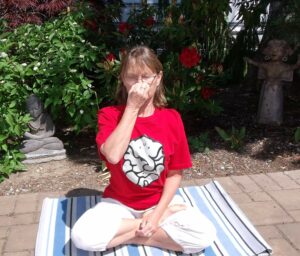
Alternate nostril breathing is very calming and balancing. It uses both sides of the brain by alternating back and forth between both nostrils. The right nostril affects the left brain and the left nostril affects the right brain. There are a number of alternate nostril breathing techniques that can be helpful for rejuvenation of the body and mind, reducing stress, preparing for sleep, or to deepen savasana after asana practice.
Sukha Purvaka is a simple alternate nostril breathing technique. Sit up straight with an erect spine and a slight firmness below the navel if possible.
 Using Vishnu mudra (aka Nasagra mudra), close the right nostril and exhale out the left nostril.
Using Vishnu mudra (aka Nasagra mudra), close the right nostril and exhale out the left nostril.
Inhale through the left nostril, slowly smoothly, and deeply, filling the lower, middle and upper lungs.- Close both nostrils and retain the breath “as long as is comfortable” (meaning with effort but without struggle).
- Open the right nostril and exhale slowly, smoothly, and deeply from the lower, middle and upper lungs.
- Through the right nostril, inhale slowly, smoothly, and deeply, filling the lower, middle and upper lungs.
- Close both nostrils and retain the breath “as long as is comfortable” (meaning with effort but without struggle).
- Open the left nostril and exhale slowly, smoothly, and deeply from the lower, middle and upper lungs.
- This is one round. Continue for 5, 10 or even 20 rounds, if comfortable. Then, if possible, lie down to relax and integrate the practice.
During inhalations I like to think that I am “purifying” my body with a fresh intake of oxygen and prana. During breath retentions I try to feel my body absorbing the oxygen and life force as much as possible. During exhalations if think about “releasing” all the toxins, including toxic thoughts and stresses, aches and pains.
Regulate the length of inhalation, retention, and exhalation according to your comfort level. You can refer to the ratios for counts discussed for Ujjayi pranayama, or simply go by what feels best and comfortable in the moment. Sukha Purvaka is intended to be an easy, comfortable alternate nostril technique. You can learn more about it on page 75 in my book Letters from the Yoga Masters.
There are numerous other pranayama techniques but these are the ones I found most useful for immediate conditions on the trail.
MEDITATION FOR THE HIKING TRAIL
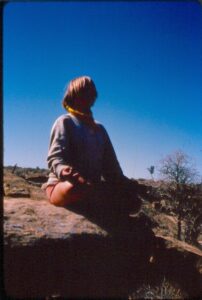 Meditation can be the most accommodating practice of yoga, and even more so on the trail. It is rarely difficult to find time to meditate while hiking long distances, and it is rarely difficult to find quiet. In the wilderness I am grounded with the earth, with a perfect meditation environment. The peace of the mountains offers the most perfect solitude one could ask for. No wonder the reclusive yogis in the Himalayas spent time in their caves.
Meditation can be the most accommodating practice of yoga, and even more so on the trail. It is rarely difficult to find time to meditate while hiking long distances, and it is rarely difficult to find quiet. In the wilderness I am grounded with the earth, with a perfect meditation environment. The peace of the mountains offers the most perfect solitude one could ask for. No wonder the reclusive yogis in the Himalayas spent time in their caves.
On the trail with my sister, we naturally gravitated to individual tasks. I would make breakfast while she would break down the tent. I would set up the tent while she would make dinner. Sometime during the mid-afternoon, she would take out her watercolours to paint and I would do my asanas. During other rest breaks I would sit for pranayama and meditation, and she would study the maps. Create time in your trekking schedule to ensure you meditate regularly.
Ajapa Japa Gayatri Mantra:
I often do verbal or mental japa (mantra repetition) for endless hours while I hike. I also chant bhajans (sacred songs). These help me stay connected to the Creator. Nature is beautiful, but it is not always kind, so these techniques help me to be at peace with nature.
Remember the Ujjayi technique of synchronizing the footsteps with the breath? I like to take this a step further and synchronise a mantra to my footsteps and the breath.
The Ajapa Japa Gayatri mantra, “So Ham”, is always on our breath. We breathe approximately 22,000 times a day, so this mantra is in constant repetition, riding on our breath without us having to do anything. It translates to mean “I am”. Take a moment and become aware of the sound of this mantra hidden in your breathing. Listen for it.
Inhale and hear the mental repetition of “So” for the count of 3 footsteps, then exhale and hear the mental repetition of “Ham” for 3 footsteps. Find your own count that fits the terrain you are walking along. I like to imagine each inhalation draws the power of the Divine into me, and on the exhalation my personal power merges with that of the Divine Universe. This mantra can fortify your inner strength. It can take your mind away from any discomfort and find the Divine power within.
You can learn more about japa and the ajapa meditation on page 194 in my book Letters from the Yoga Masters. You can also learn more from this short Episode 20 of Snippets of Yoga Philosophy talks on the SOYA youtube.
Aside from the mantra So Ham, you can choose your favourite mantra to use, or simply Om. Om attunes us to the Divine, like using an antenna or radio dial. Inhale “Om” for the count of 3 footsteps, exhale “Om” for the count of three footsteps.
 I like to carry my mala beads in my pocket when I walk. Then I can use them while repeating the mantra. For a lightweight option, pack a wrist mala. I like wrist malas with 27 beads – then 4 times around the mala = 108 beads, the equivalent of a full mala. If you do not know how to use mala beads, check out Episode 22 of the Snippets of Yoga Philosophy.
I like to carry my mala beads in my pocket when I walk. Then I can use them while repeating the mantra. For a lightweight option, pack a wrist mala. I like wrist malas with 27 beads – then 4 times around the mala = 108 beads, the equivalent of a full mala. If you do not know how to use mala beads, check out Episode 22 of the Snippets of Yoga Philosophy.
Meditation can provide the space to find the inner calm. From this inner calm we can find the strength to rise up to each challenge. How we respond to each situation is an opportunity for svadhyaya, self-study. Self-study is a time to observe our reactions to challenges in life. It is an extremely powerful way to develop an attitude of acceptance, making way for finding solutions with less stress.
I have recorded a number of meditations from my book Letters from the Yoga Masters and you can find the entire playlist on the SOYA youtube site. There are several meditations contributed from other SOYA Yoga faculty as well. You can choose the meditation that you need at the moment – for healing, centering, grounding and more.
I find that the body adapts and strengthens quickly to the physical demands of living on the trail. However, challenges arise that affect us emotionally and mentally every day. Coping with inclement weather conditions, encounters with wild animals like Grizzly bears and rutting elk, the constant search for water – meeting the basic needs of food, clothing, and shelter on a daily basis can take a toll on the mind. Responding to these challenges with grace and a calm, collected mind will make a difference.
Returning to Society
At the end of a long journey like the Continental Divide (3000 miles), moving back into “common, everyday life” can be a big adjustment. Living life on the trail for an extended time is like being in a bit of a bubble away from society’s expectations. Life in the wilderness is simplified. It allows one the time to truly come to know their strengths and weaknesses. It is a different life, and one must allow time to reintegrate into society, without losing the powerful lessons learned from being with nature. This transition from survival in the wilderness to survival in urban society can be frustrating and disappointing.
I like to think about my time on the trail as similar to a yoga retreat or training immersion. This focused, simplified life becomes very basic. A daily routine without external distraction is established. Challenges are met with learned and practiced skills.
Re-entering society we can find ourselves feeling bombarded. Draw on your yoga tool kit – all the techniques that fall under the 8 limbs of yoga. These are tools for life that can help to make any adjustment smooth.
Do asanas, breathe, and meditate. Eat well and rest. Let your best-self shine brightly for all, including yourself.
Swami Sivananda said,
“Serve, love, give, purify, meditate, realise. Be good, do good, be kind, be compassionate. Adapt, adjust, accommodate. Inquire “Who am I”, know thyself and be true. Om Tat Sat.”
These wise words can help us to live like yogis anywhere, any time.
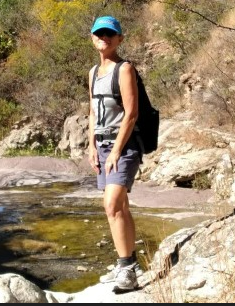
Marion Mugs McConnell is the co-founder of SOYA and the SOYA Yoga Teacher Training program. This year she celebrates 50 years of yoga. She is an avid backpacker, hiker, and yoga student. She has backpacked from Mexico to Canada twice, along the Pacific Crest Trail and the Continental Divide. She rode her bicycle across Canada and around England.
Mugs presented the results of this “Yoga on the Trail” study at the IYTA international yoga conference in Spain, in 1984.
Mugs is the author of Letters from the Yoga Masters: Teachings Revealed through Correspondence from Paramhansa Yogananda, Ramana Maharshi, Swami Sivananda, and Others, published by North Atlantic Books copyright © 2016 ISBN 978-1-62317-035-6.
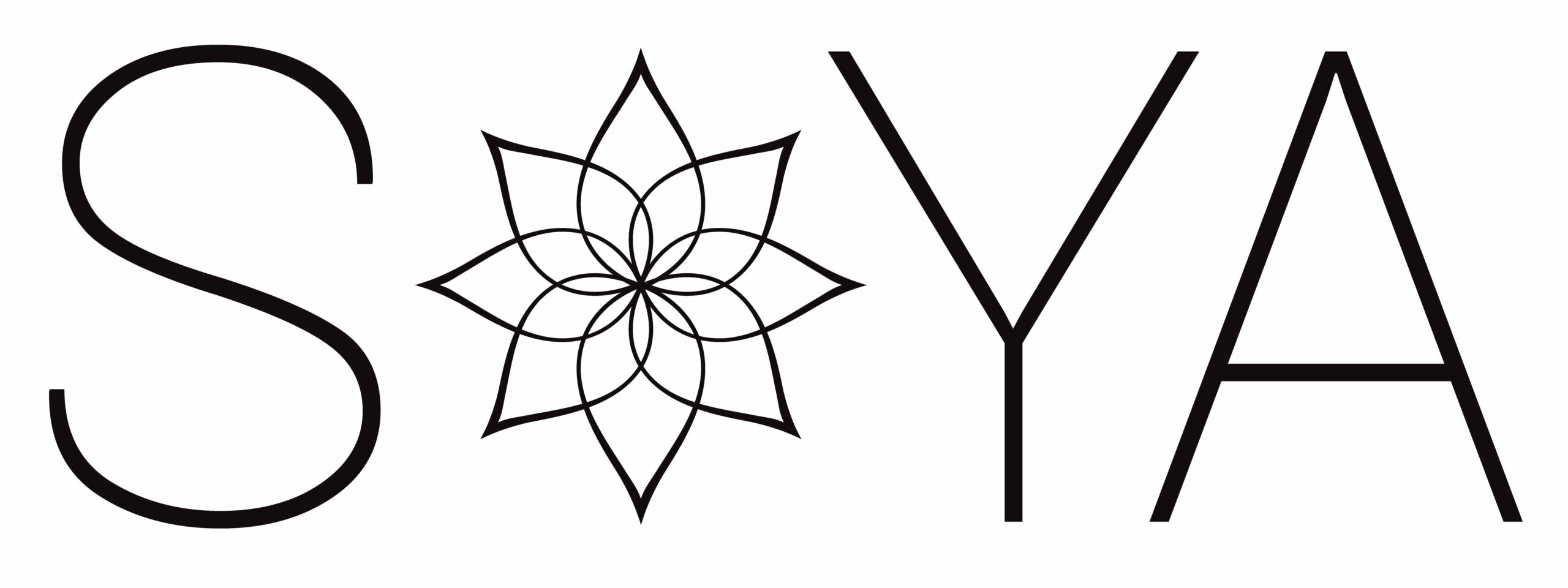
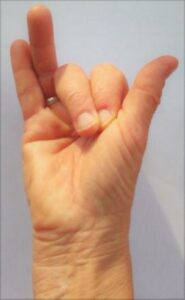 Using Vishnu mudra (aka Nasagra mudra), close the right nostril and exhale out the left nostril.
Using Vishnu mudra (aka Nasagra mudra), close the right nostril and exhale out the left nostril.
Recent Comments